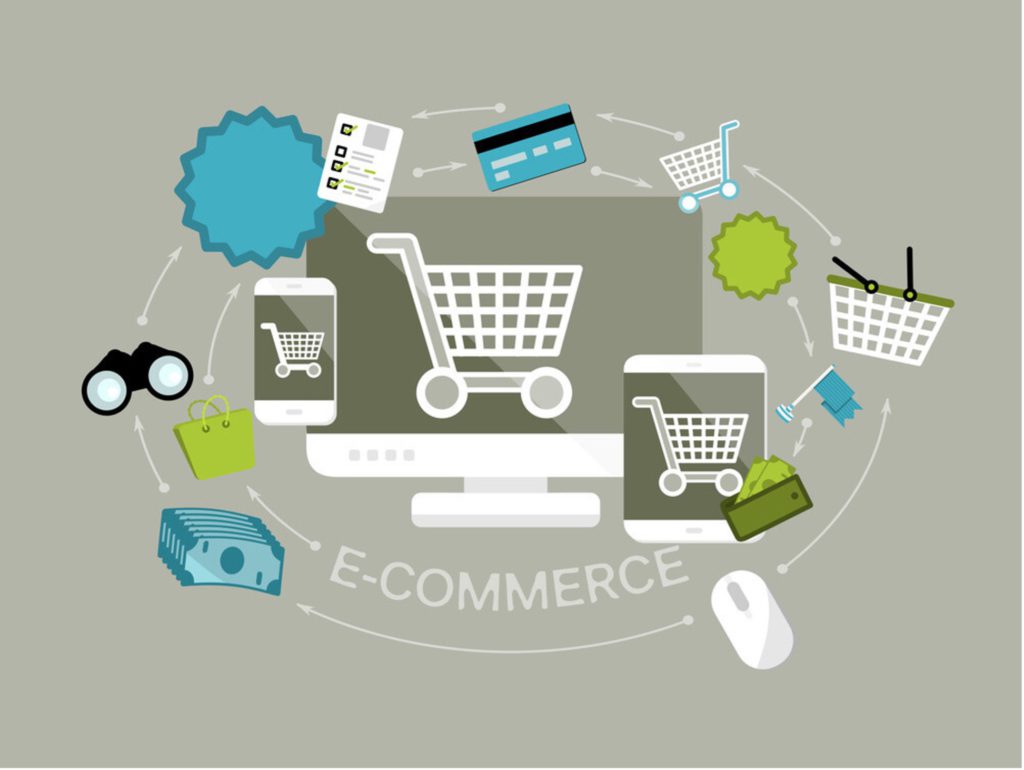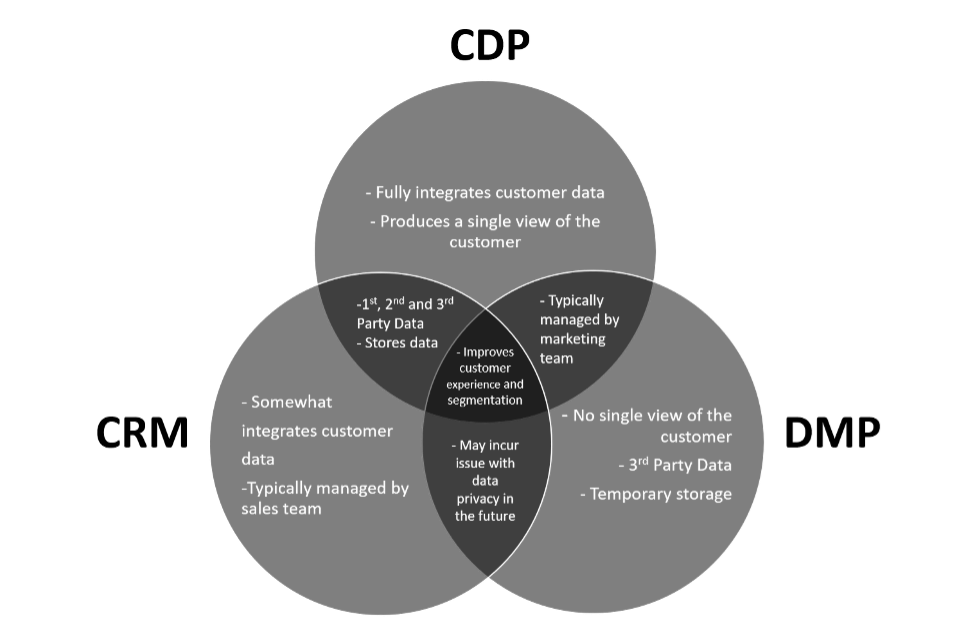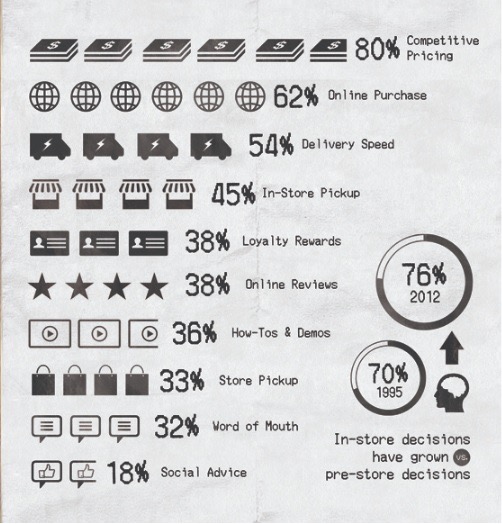About 2.5 quintillion bytes (2.5 e+9) of data is generated every day. Interestingly, an enormous chunk of this data comes from eCommerce transactions. Customers’ shopping activities, social media clicks, web browsing histories, purchases, and chart abandonments generate tons of data.
These data present a unique opportunity for eCommerce companies to get insight into their customers’ behavior. Leveraging data will allow you to identify customers’ needs, market trends and tailor your products to meet customers’ demands.
Ecommerce giants like Amazon are leveraging data to improve customer experience. Amazon can create individualized recommendations for customers, increasing sales.
But despite its obvious benefits, many brands still don’t know how to glean invaluable insights from a large amount of data available to them. One reason for the underutilization of data is the absence of tools to break down these data.
Ecommerce data is often unstructured and stored in silos. Even though CRM and DMP platforms can help marketers leverage some of these data, most of it is left untapped.
The ultimate tool to make the best out of your eCommerce data is a Customer Data Platform (CDP).
- Using a CDP for eCommerce
- CDP Use Cases In Ecommerce
- 1. Elevated Shopping Experience
- 2. Product Recommendations
- 3. Demand Forecasting
- 4. Price Optimization
- 5. Increase Personalization of Product Offering
- 6. Enhance Operation While Reducing Cost
- 7. Identify Customer Behavior and Shopping Pattern
- 8. Payment Security
- 9. Optimize Customer Service
- 10. Generate more sales
- Bottom line

Using a CDP for eCommerce
Ecommerce data is often unstructured as it’s generated from a myriad of sources. This data, coupled with the large volume of the data, makes it extremely difficult to aggregate and analyze for business use. This is where a customer data platform CDP comes in. The CDP technology empowers companies to leverage the massive amount of customer data to generate insight. The tool will consolidate all your many data silos into a single database. It then uses this data to create a single profile for individual customers. Thus, enabling you to visualize their activities in all channels.
Customer Data Platforms offer both urgency and convenience. It combines both first, second, and third-party data to provide real-time insight. These insights enable you to make at-a-go modifications to your processes. It also provides insights directly to marketers and other teams in the organization. Thus eliminating the overreliance on IT departments.
Customer Data Platforms are more advanced than any other customer data tool you may have. For instance, while the sales team uses a CRM to collect data, it does nothing more. Similarly, a DPM is mostly used by marketers to build advertising audiences.
A CDP, on the other hand, offers identity resolution. It allows you to provide more personalized marketing and recommendations. CDP data will make your business more customer-centric. It makes it easier to communicate with your customers while increasing sales. CDPs integrate with other eCommerce tools to enable you to achieve so much more.

CDP Use Cases In Ecommerce
1. Elevated Shopping Experience
80% of customers in a Salesforce report say experience is just as relevant to them as products and services. In a similar study conducted by PWC, 65% of the respondents said they find a positive experience to be more influential than advertising.
Delivering an exceptional customer experience is what makes you stand out from your competitors. When used right, a CDP can provide insight that will help you understand the ideal experiences your customers expect throughout their journey. You’ll be able to identify and resolve marketing or payment issues to enhance the customer experience.
CDP’s predictive capability helps you anticipate how customers may behave in the future.
2. Product Recommendations
Product personalization accounts for about 31% of the revenue in eCommerce. Similarly, 35% of customers’ purchases on Amazon come from product recommendations.
All these go to show how effective personalized recommendation is in eCommerce. The CDP’s unified customer system is the best friend to a recommendation engine. With a CDP, you would make real-time product recommendations based on the customer’s previous purchase and its budget. Data like customers’ recent activities, online behavior, and social media activities also provide powerful insight for recommendations.
Customer platforms enable personalized recommendations within your website, emails, and ads.
3. Demand Forecasting
Data generated by a CDP allows you to predict the demand for a product and forecast sales. Being able to predict future sales trends gives you an edge over your competition. It also helps you optimize the customer journey.
For instance, if you own an online boutique, you can forecast the number of people that will need a particular shirt or the colors you’ll need to order based on past purchase patterns.
Normally, this is decided based on rules of thumb that aren’t reliable or just based on your gut. Using historical data ensures your forecasts are more accurate. Reducing the risk of overstocking or under-stocking.
4. Price Optimization
80% of consumers consider competitive pricing as the most important aspect of online shopping. With the internet, customers can easily compare the prices of items on various online stores before deciding. If your prices are too high, then they’re less likely to buy from you.
With a Customer Data Platform, you can collect and compare prices from your competitors and other sources and make necessary adjustments where necessary.
CDP updates happen in real-time, so you’ll have access to the freshest market information and be able to manipulate prices based on demand.
It will allow you to identify products with high demands and charge more for them while reducing products’ prices with fewer demands.

5. Increase Personalization of Product Offering
86% of consumers say personalization is essential in their buying decision. Customers today expect personalized services and may switch to your competitors if you have no personalization. With a CDP, you’ll have a 360-degree view of your customer activities and be able to personalize customer journeys in real-time.
Joris Evers, a former Director of Global Communications for Netflix, attributes the platform’s success to personalization. Netflix collects a massive amount of data on their customers and uses it to tailor user dashboards based on their interests.
In the last year, eCommerce companies lost about $756 billion because of poor personalization.
6. Enhance Operation While Reducing Cost
Data provides insight that improves every aspect of your business, including your marketing and supply chains. These advancements can lead to massive cost-cutting and money-saving. For instance, you most likely won’t want your ads to be shown to your existing customers. But since there’s no centralized database, it’s difficult to identify these customers.
Implementing a CDP provides a solution for this. The single profile it creates enables you to identify and exclude certain customers from your ad campaign, saving you valuable advertising dollars.
Also, CDPs provide insight to make strategic business decisions. You can leverage the insight it provides for budgeting and marketing decisions. 93% of marketing executives believe that using data helps teams meet complex tasks and stand out from their competition.
7. Identify Customer Behavior and Shopping Pattern
Understanding your customers’ behavior is the foundation for enhancing the experience and optimizing marketing strategies. The more you know about your customers, the easier it’ll be to sell to them. Determining customer behavior allows you to find out what influences their purchase decisions.
A Customer Data Platform doesn’t just enable you to understand your customer. You’d know them individually, leading to increased customer satisfaction and retention. You’ll be able to identify and fill the gap in your offerings and make your target audience more receptive to your marketing efforts.
8. Payment Security
Customers need to know that your platform is trustworthy and their payment details are secure.
To prevent theft, you can use a combination of data and machine learning to detect suspicious patterns. Some tools allow you set up alerts for such suspicious behavior. For instance, let’s say you notice different purchases coming from the same IP address and with different credit cards. That is worth investigating.
It also allows you to identify your customers’ most preferred payment options. So you optimize its position to increase conversion.
Having payment security is one of the top priority for an eCommerce business. It should be updated from time to time to prevent unauthorized purchases thus resulting to lose customers trust.

9. Optimize Customer Service
Exceptional customer service is vital for growth in today’s world. Successfully implementing an enhanced customer service, however, requires eCommerce data. The more data your customer service team has, the better their interaction with customers would be.
With a Customer Data Platform’s single profile, customer care representatives will identify specific customers and access a large amount of data, including their purchase history and personas. This makes it easier to probe and solve the customers’ problems.
Again having great customer service increases customer loyalty and the chance of referrals.
10. Generate more sales
The end goal of all eCommerce activities is to generate more sales. Insight from CDPs allows you to identify areas of improvement in your customer journey to reduce cart abandonment. Similarly, as mentioned above, the data allows you to offer more personalized recommendations. This, according to Salesforce, makes it 4.5 times more likely for a customer to add the item to the cart and complete the transaction.
Data also makes it possible to offer personalized coupons to meet your customers’ shopping desires in real-time. Asides from recommendations, data can help you run more accurate marketing campaigns to increase sales.
Bottom line
The truth is that data has already affected the eCommerce industry and will continue to play a massive role in its growth. 95% of purchases expected to be made online by 2040. Implementing a customer data platform to better understand your data seems like the best next move.

